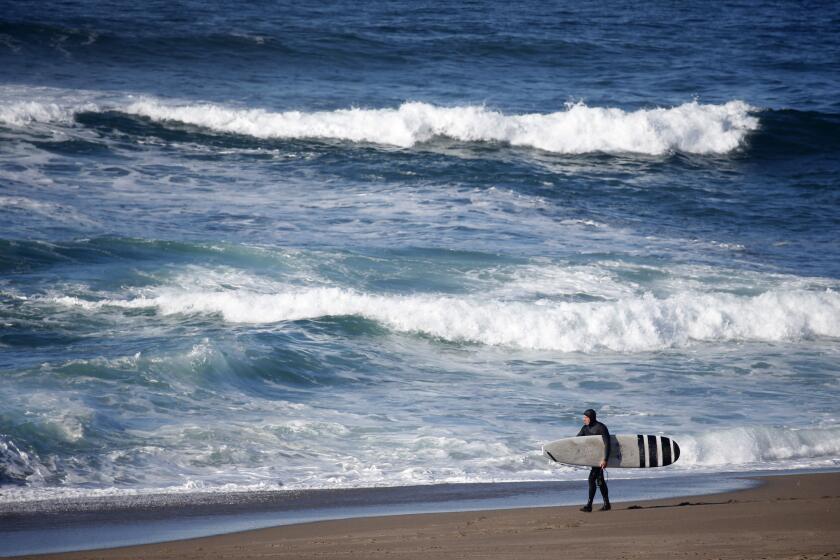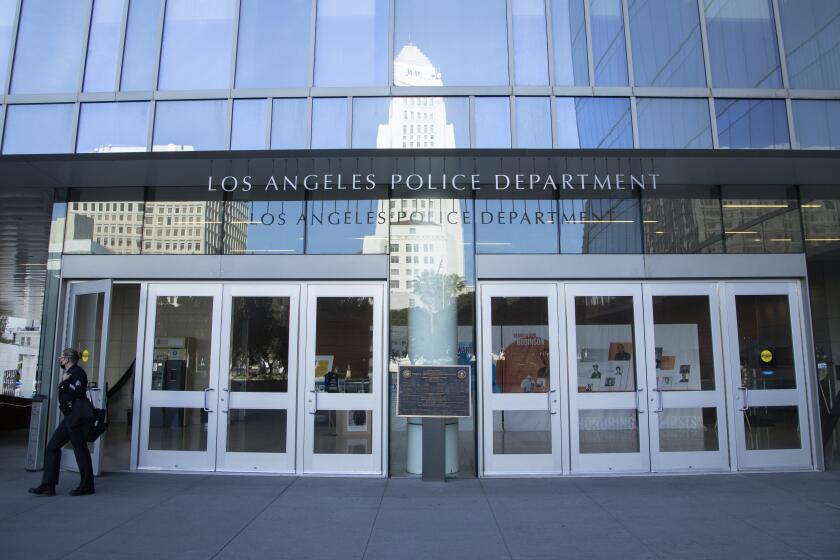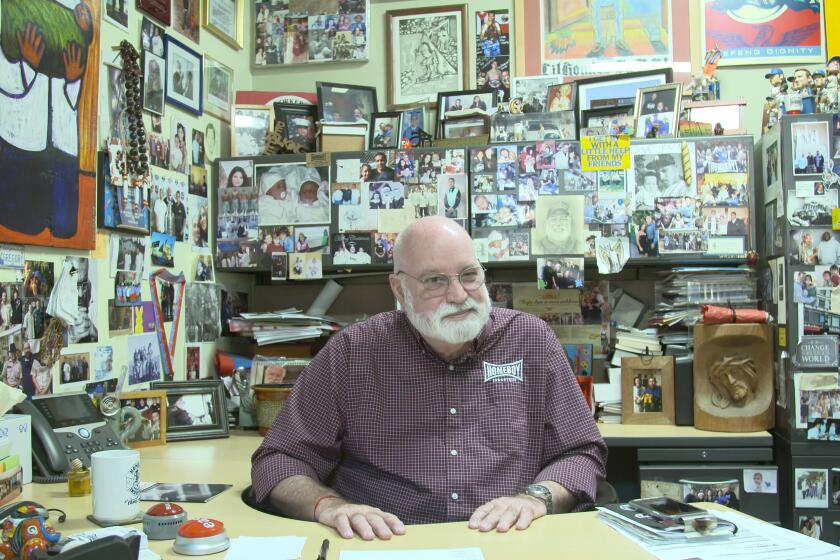There’s Little Comfort in a Balance of Terror
Self-deception always has come more naturally to Los Angeles than to other cities.
Maybe there’s something in the beauty of the light that rounds and softens the sharp edge of deceit. Maybe it’s simply that the physical distance between people here leaves plenty of room for the construction of comfortable illusions.
In the two weeks since the riot, our common capacity for self-deception has been working double shifts. Most of what it has produced probably is harmless; some of it is dangerous. Take, for example, what has come to be the conventional wisdom about guns and gangs.
A few days ago, I was talking with an old friend, now an elected official representing an influential Westside constituency. “I’ve supported gun control all my life,” he said. “But after what happened in my neighborhood during this thing, I don’t think I can, in good conscience, do anything that would keep people from getting guns if they want them. When push came to shove around here, the police just weren’t there. People had to rely on themselves for defense, and most of the time they were empty-handed. Morally, I don’t think I can ask them to take that risk again.”
Strong stuff. And, according to the passions of the moment, pretty convincing. But, as Times staff writer David Freed has reported in an impeccably documented series that concludes today, Los Angeles already is the most heavily armed urban area in America.
Over the last five years, 466,453 handguns were purchased legally in Los Angeles County. That’s one for every 19 residents. In Orange County during that same period, 151,740 handguns were purchased legally, which is one for every 16 people. These figures do not include the sale of rifles and shotguns or the illegal transfer of firearms, which is rampant. Nor do they include sales since the riot, which by all accounts have boomed. Today, there are more than 3,000 federally licensed gun dealers in Los Angeles County, the highest such concentration in the nation.
Has all this civilian firepower made us safer?
According to Freed’s stories, no. Last year, this county’s hospitals treated 8,050 people for gunshot wounds. That’s 13 times the number of Americans killed and wounded during the Persian Gulf War. Last year, more people--1,554--were killed by gunshot in Los Angeles County than died in auto accidents--1,215. In 1970, 464 people in this county died by gun; 1,154 were killed in traffic mishaps. Fully three-quarters of the appalling 2,062 homicides in this county last year were committed with firearms. That percentage is appreciably higher than it was 20 years ago and well ahead of the current national average.
Comparisons between our recent disorder and the Watts riots also are instructive. Two-thirds of the 23 people killed in 1965 were shot by police or national guardsmen. Two-thirds of the more than 50 people killed two weeks ago were shot by other civilians.
During the more recent riot, stores and other businesses owned by Korean-Americans were singled out by looters. Much has been made of the way Korean merchants organized and armed themselves in their own defense. But the only Korean-American killed during the disorder probably was shot mistakenly by his own comrades in a nighttime exchange of gunfire.
More guns in more hands may make more of my friend’s constituents feel momentarily safer. But, as The Times’ series demonstrates, we’re unlikely to find real security in a balance of terror.
Nor will we find it in an accommodation that somehow legitimizes the street gangs that for the last decade have made life hellish in parts of South Los Angeles. If you’ve been watching the television news and talk shows on which these characters appear, you’d think the Crips and Bloods were fraternal organizations with a charming penchant for colorful nicknames.
In fact, they are criminals: They sell drugs; they commit robberies; they kidnap people; they murder small children at play in their front yards. For years, African-American churches and community organizations have struggled to deal with this tiny but violent minority in their community. Their success has been limited in large measure because they have been denied access to media and other resources now being made available to the gangs.
Let us for the moment assume that this riot had occurred in Little Italy or Chinatown. What would the reaction be if someone suggested that the resolution of the situation would have to take into account the interests of the Mafia or the Wah Ching? That person would be laughed off the public platform and their views dismissed as an obvious and outrageous affront to the overwhelming majority of hard-working, law-abiding Italian- and Chinese-Americans.
However, when just that point is made about South Los Angeles and the part the Crips and Bloods purportedly ought to play in its reconstruction, heads across this country--almost all of them white--bob in agreement. When people suggest that somehow the interests of African-American people generally are consistent with the interests of a tiny minority of semi-organized black criminals, people across this country--most of them white--concur.
Why? Racism.
Many right-wing whites still cling to their belief that alone among the peoples who make up this nation, the African-American community naturally encompasses a criminal element. Many left-wing whites hold with equal tenacity to their romantic delusion that ill-educated, poorly spoken, bizarrely dressed thugs are “authentic blacks,” while well-spoken, educated African-American men and women in coats and ties and Chanel suits are not. Blacks of the latter sort are inconvenient because they have views of their own and demand to be dealt with on terms of equality.
The convenient thing is that whites at both ends of the ideological spectrum can have their fantasies about black Americans fulfilled in the preoccupation with gang members. The problem is, we no longer can afford to deceive ourselves about either weapons or those who use them.
Nearly 70 years ago, the poet William Yeats contemplated the follies that had lead his people into civil war and wrote what could be Los Angeles’ epitaph:
We had fed the heart on fantasies,
The heart’s grown brutal from the fare;
More substance in our enmities
Than in our love. . . .
More to Read
Start your day right
Sign up for Essential California for news, features and recommendations from the L.A. Times and beyond in your inbox six days a week.
You may occasionally receive promotional content from the Los Angeles Times.






